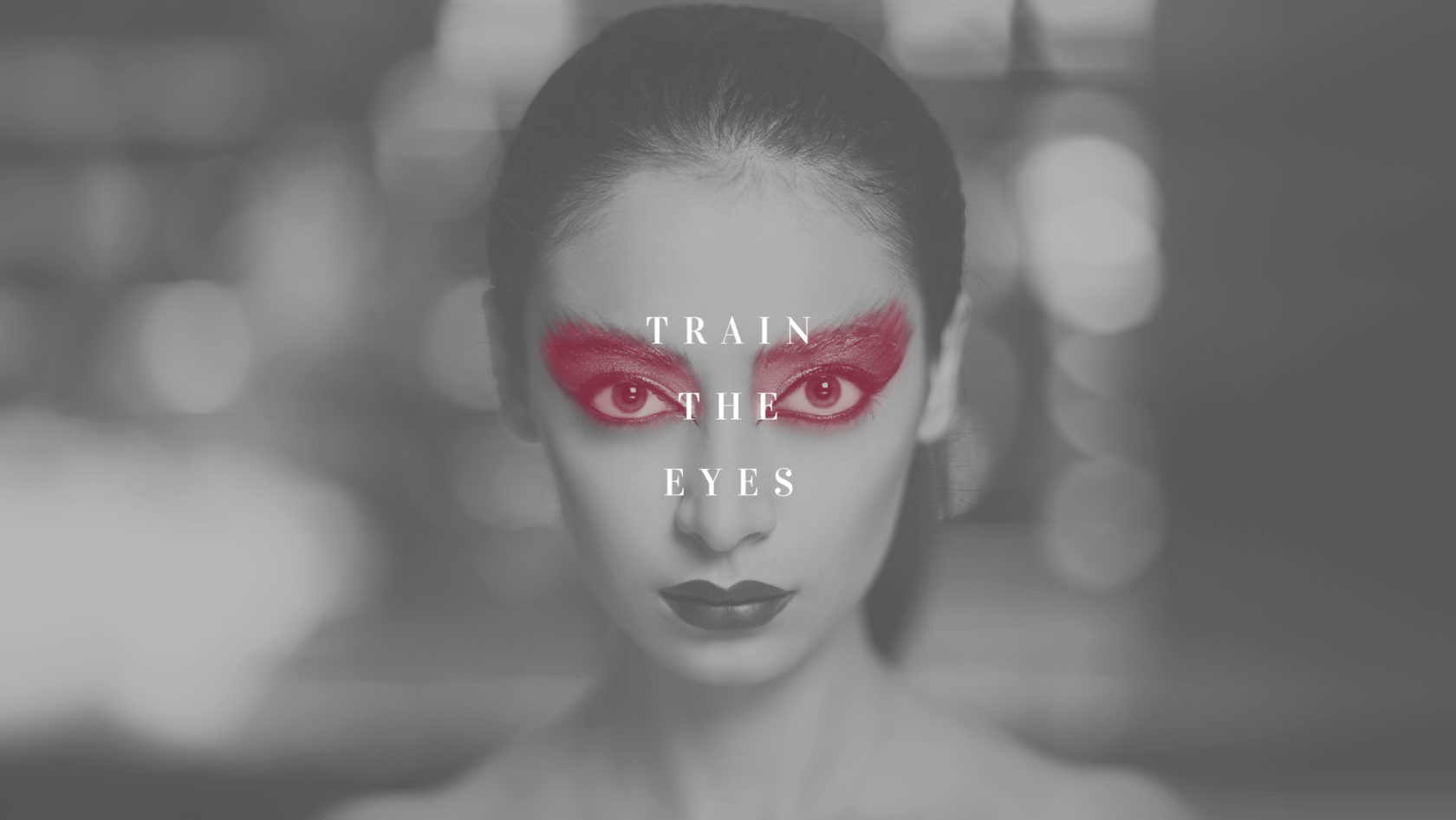Eyes up. Eyes down. Eyes gazing all around.
The smallest details can make the largest impact, and that could not be more true than when it comes to the eyes. Piqué arabesque with the eyes remaining level and you have an “okay” movement. But allow the eyes to be a part of every single part of that piqué arabesque and suddenly the movement transports us to the land of Beauty. The land of Art.
But how do we get our students there? How do we get them to stop staring at the floor? To peel their eyes away from the mirror? To allow their vision to push past not only their own space but the space of the studio or the theater?
Here are my four tips, from most basic to most advanced . . .
Start With The Head
Since our eyes live in our head, it makes sense to start with where our head is. Have you ever told you students to follow their hand with their eyes and then they do, but somehow they manage to only use their eyes and not their head making them look all kinds of shifty? A solution to this is to pull the focus to the head instead. Keep the neck loose and free to move, and then speak about the eyes following where the head is going.
Love The Floor
We drill into our students to keep their eyes lifted. But lowering the eyes is not bad. In fact, it is good. When we lower the eyes, they can then lift and create a completed movement as opposed to a half movement. But knowing when to lower the eyes can be tricky for the students. Teach them about how the head coordinates with port de bras and since they have already learned their eyes follow where their head goes, everything should begin falling into place.
See Something
I see a lot of students who don’t seem to be looking at anything. Their eyes are just existing, but not working for them. They need to learn how to “see something” even when there is really nothing to see.
- See the step! Not in the mirror but wherever it is you are looking.
- See the feeling!
- See the story!
- See your success!
This is mainly happening in the mind, but the dancers must learn how to allow the visualizing they are doing in their head to pour out through their eyes. This will create the appearance of confidence and get them out off that dazed look.
Leave The Space
If we can help them cast their eyesight beyond their personal space, beyond the walls of the studio, beyond street the theater rests on, beyond it all—that is when their audience will not be able to take their own eyes off them. A dancer who has allowed herself to be transported beyond this earth will also transport her audience. And we can take steps towards this journey by getting our eyes out of the immediate space we are in and seeing more. Exploring more. Experiencing more.
Related Articles


Comments
No comments for this post.
Add Comment